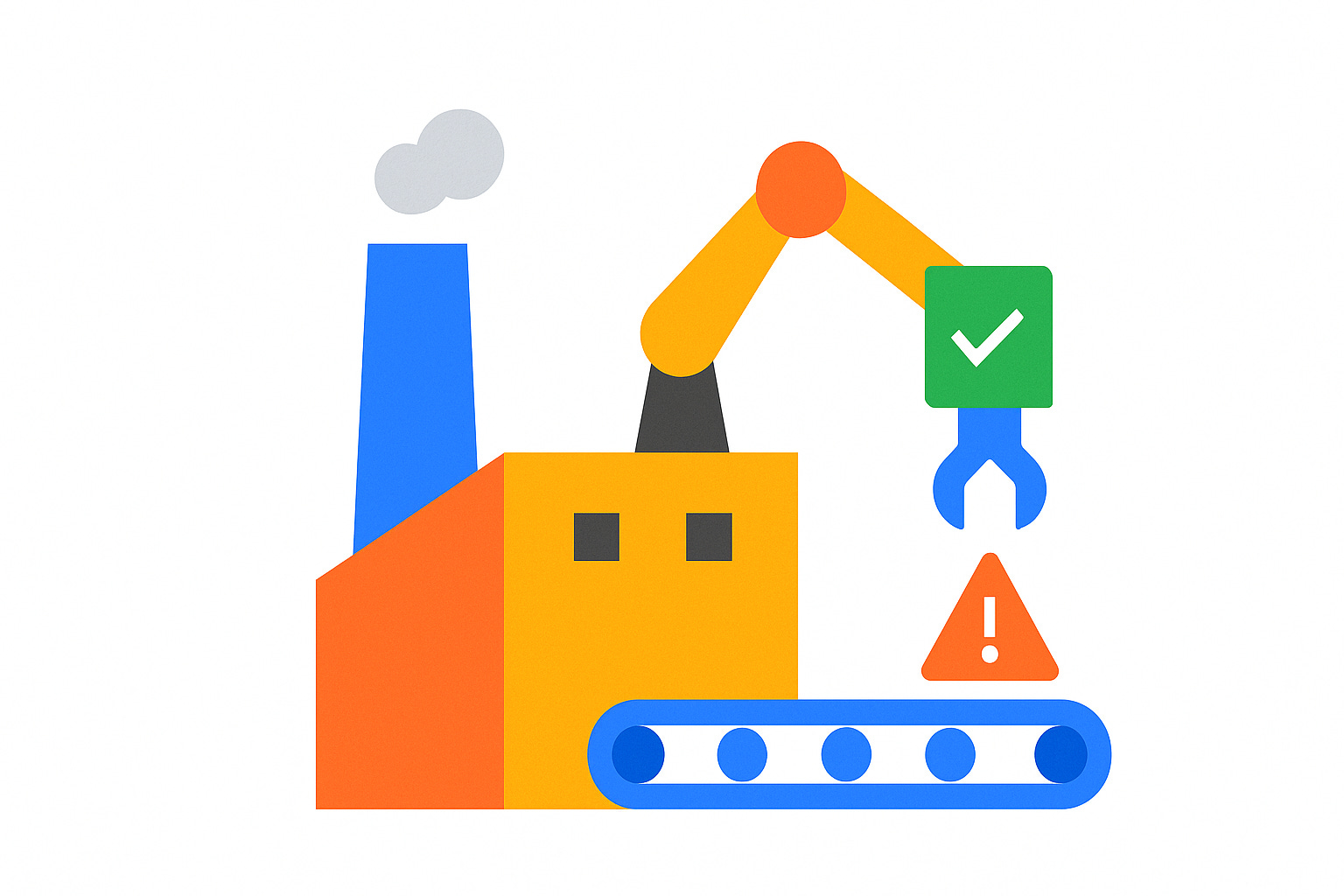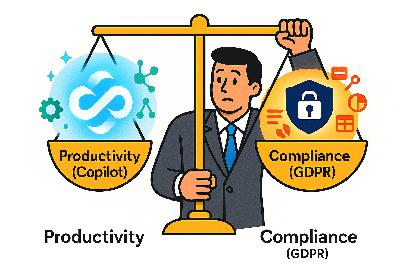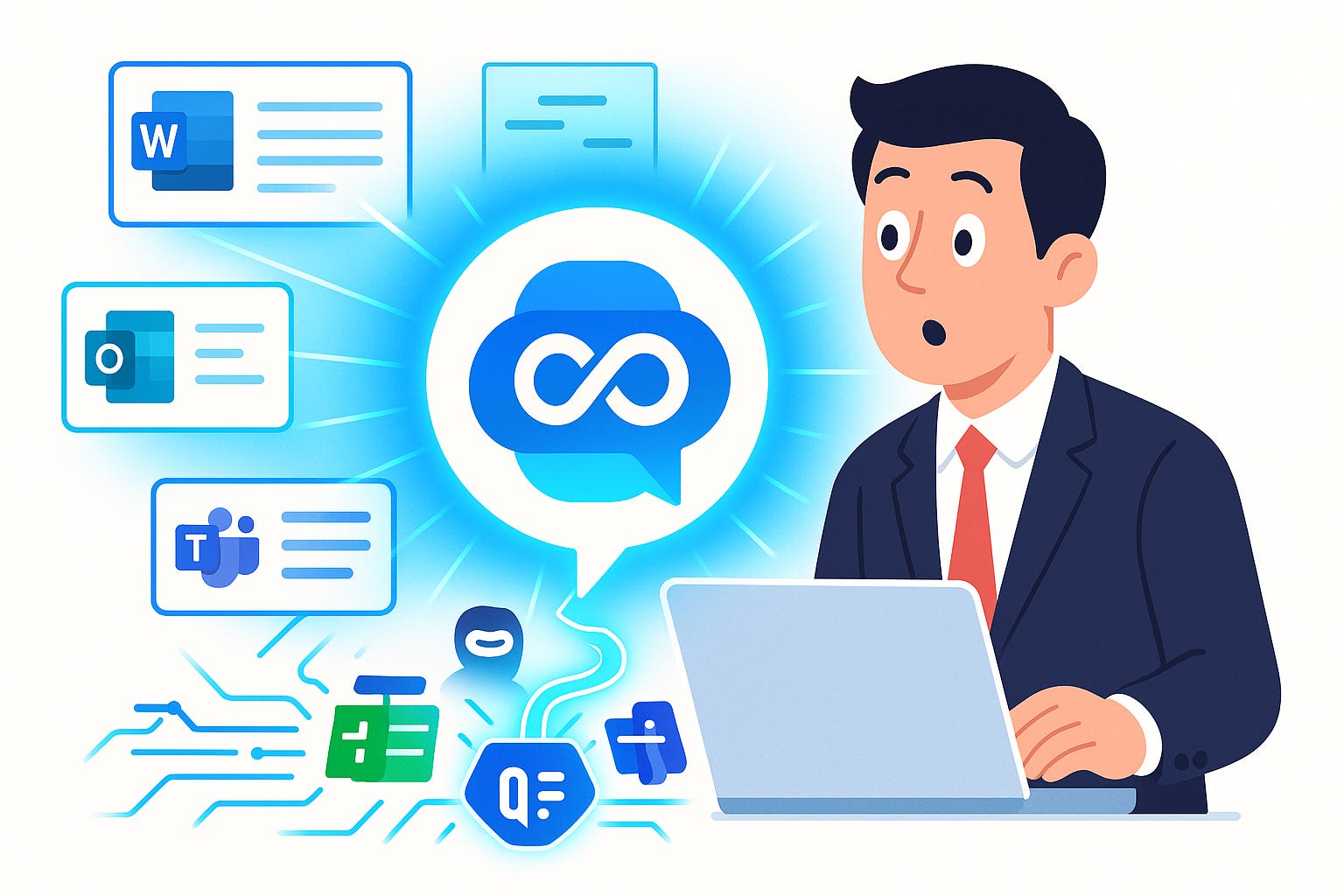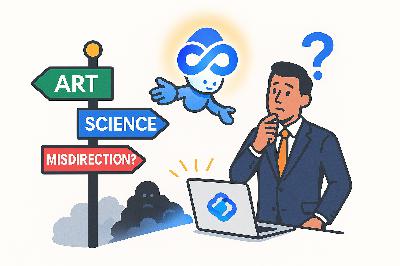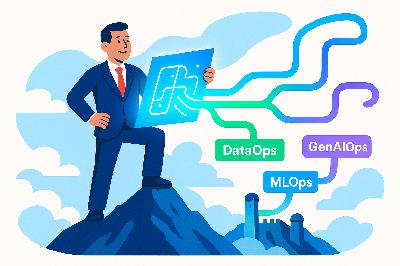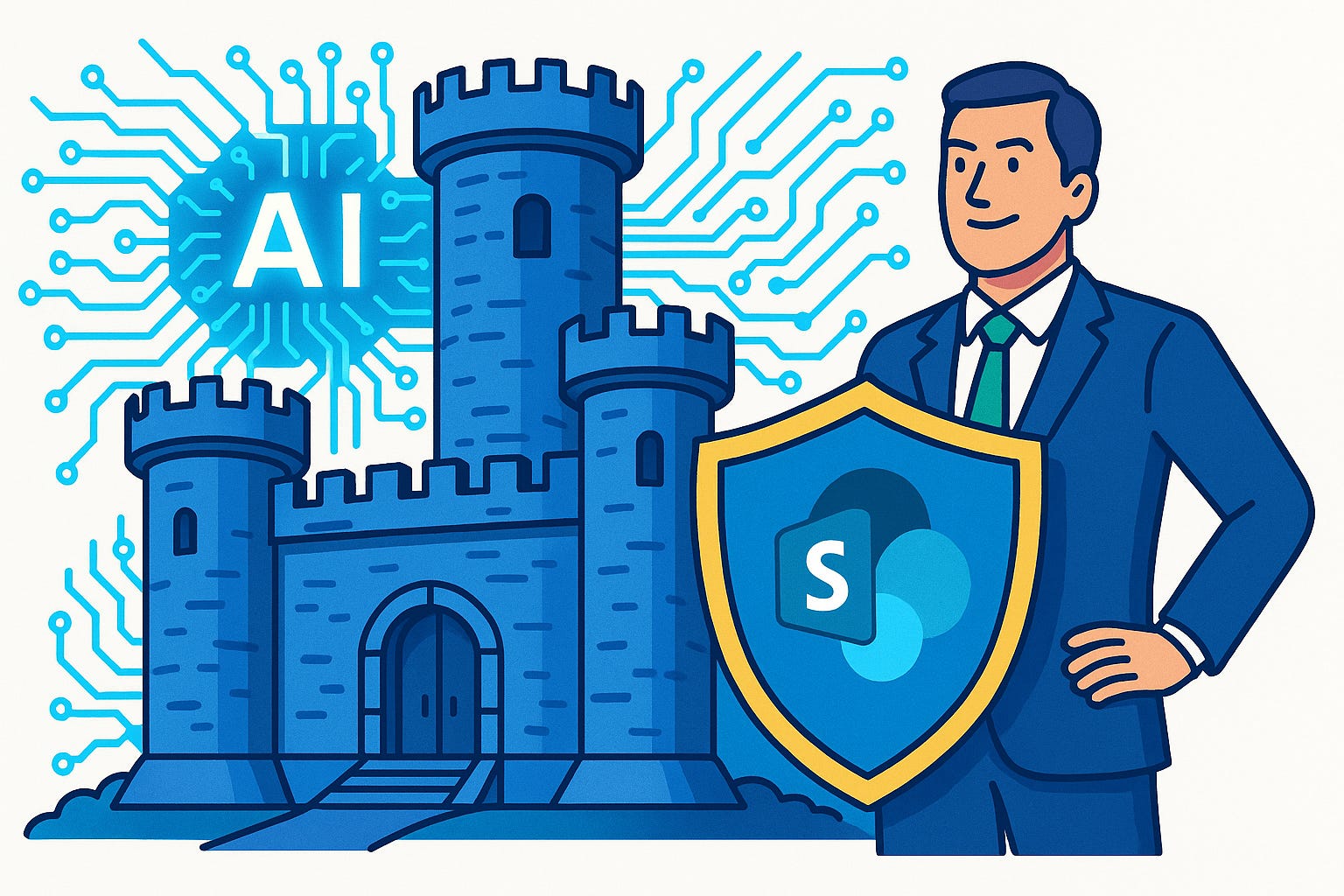Why Microsoft 365 Copilot Pays For Itself
Description
Ah, endless emails, meetings, and reports—the black hole of modern office life. What if I told you there’s a tool that pays for itself by giving you back those lost hours? According to Forrester’s Total Economic Impact model of a composite organization with 25,000 employees and $6.25 billion in revenue, risk‑adjusted returns reached 116% over three years. Not bad for something hiding in your inbox.
Here’s the flight plan: Go‑to‑Market, where revenue shifts up; Operations, where wasted hours become measurable savings; and People & Culture, where onboarding accelerates and attrition slows. Along the way, you’ll see a pragmatic lens for testing whether Copilot pays off for specific roles.
But before we talk multipliers and pipelines, let’s confront the baseline—you already lose staggering amounts of time to the daily grind.
The Hidden Cost of Routine Work
Picture your calendar: a tight orbit of back‑to‑back meetings circling the week, an asteroid belt of unread emails, and stray reports drifting like debris. The view looks busy enough to impress any passing executive, but here’s the trouble—it’s not actually accelerating the ship. It’s gravity posing as momentum.
Most of the energy in a modern workday isn’t spent on breakthrough ideas or strategic leaps forward. It gets consumed by upkeep—clearing inboxes, formatting slides, patching together updates. Each task feels small, but stacked together, they create a gravitational pull that slows progress. The danger is that it feels like motion. You answer another email, the outbox looks full, but the work that builds value drifts further from reach. Busy does not equal valuable.
That mismatch—the appearance of activity without the substance of impact—is the hidden cost of routine work. Companies bleed resources here, quietly and consistently, because time is being siphoned away from goals that actually change outcomes. The most expensive waste isn’t dramatic project failure; it’s the slow leak of a thousand minor chores.
Forrester’s research put numbers to this problem. In one example, they found product launch preparation that normally took five full days shrank to just about two hours when Copilot shouldered the labor of drafting, structuring, and organizing. That’s not shaving minutes off—it’s folding entire calendars of busywork into a fraction of the time. Multiply that shift across repeated projects, and the scale of reclaimed hours becomes impossible to ignore.
From there, the model continued: on average, Copilot users freed about nine hours per person, per month. Now, here’s the essential qualifier—forrester built that figure on a composite company model, risk‑adjusted for realism. It’s an average, not a promise. Actual results hinge on role, adoption speed, and whether your underlying data is ready for Copilot to make use of. What you should take away isn’t a guarantee, but a credible signal of what becomes possible when the routine is streamlined.
And those hours matter, because they are flexible currency. If you simply spend them on clearing the inbox marginally faster, then not much changes. The smarter move is to reassign them. One practical suggestion: pick a single recurring deliverable in each role—be it a weekly report, meeting summary, or pitch draft—and make Copilot the first‑draft engine for that task. This way the recovered time flows straight into higher‑order work instead of evaporating back into low-value cycles.
Imagine what that looks like with consistency. A marketing coordinator reclaims a morning every month to refine messaging instead of copying charts. A project manager transforms hours of recap writing into actual forward planning. Even one intentional swap like this can alter how a day feels—less tactical scrabble, more strategic intent. That’s the hidden dividend of those nine hours: space that allows different choices to be made.
Of course, the risk remains if you don’t prepare the terrain. Without good data governance, without teaching teams how to integrate Copilot thoughtfully, the time gains dilute into noise. The tool will still accelerate drafts, but the uplift shrinks if the drafts aren’t used for meaningful outputs. Success depends as much on organizational readiness as on the software’s cleverness.
So when someone balks at paying thirty dollars per seat, the real comparison isn’t fee against zero. It’s fee against the hours currently being lost to administrative drag. Copilot doesn’t so much add a new expense as it reveals an invisible one you’re already paying: the cost of busy without value.
And when you shift perspective from hours to outcomes, the story sharpens even further. Because the real multiplier isn’t just time returned—it’s how small fractions of efficiency ripple forward when applied to critical engines, like the motions of a sales pipeline. And that’s where the impact becomes unmistakable.
Go-to-Market: The Sales Engine Upgrade
Nowhere is leverage more visible than in go‑to‑market. Sales engines magnify small inputs into outsized results, which means a fractional gain can tilt the entire arc of revenue.
That’s why the numbers matter. In the Forrester composite model, qualified opportunities rose about 2.7% and win rates another 2.5%. On paper, those sound like tiny nudges. In practice, because pipelines are multipliers, those margins compound at every stage—prospecting, pitch, close. By Year 3, that modeled company was up $159.1 million in incremental revenue, simply by smoothing the points of friction in the system it already had.
You can picture how Copilot fits into that picture. Marketing used to wrestle with campaign drafts for days; now they spin up structured outlines in hours, with prompts that add hooks teams wouldn’t have brainstormed on their own. Topics hit inboxes while they’re still timely. Sales teams find half their prep already roughed in: draft slides aligned with company data, first‑pass summaries based on what the prospect actually cared about last call, even cues for next engagement drawn from interaction history. Qualification—the eternal swamp—narrows too. Instead of drowning in weak signals, reps get a list shaped from patterns Copilot teased out of the noise. That lift in focus is often the boundary between nurturing a real deal and losing it to a competitor pacing just faster.
Without the tool, much of the week still bleeds out through bottlenecks. Reps grind through manual personalization, copy‑paste the same boilerplate decks, and miss follow‑ups in the crush of tabs. Energy evaporates. Deals stall. Managers squint at dashboards and wonder why goals keep slipping despite heroic hours. Copilot’s edge isn’t about revolutionary tactics; it’s about removing drag. Fewer hours lost in preparation. More lift placed directly under engagement and closing.
The mechanics are simple but powerful. More qualified opportunities at the top feed a broader funnel. Better win rates mean more of them make it out the bottom. Stack the changes and you begin to feel the compounding. It’s not magic; it’s just math finally working in your favor. Marginal shifts are magnified because each stage inherits the previous gain. A satellite nudged a fraction of a degree gets slung into an entirely different orbit.
But here’s the caveat. Forrester also flagged that these gains aren’t plug‑and‑play. The model assumed cleaned, permissioned data and teams willing to adopt new habits. Feed Copilot outdated or messy information and it simply generates more noise. Skip the training and reps won’t trust its drafts—they’ll drift back to their old process. Governance and coaching act like thruster adjustments: they keep the ship moving toward its actual destination rather than sliding back into inefficiency.
When those conditions line up, though, the benefits start to crystallize. Forrester estimated a net present value of roughly $14.8 million tied to sales and retention gains in just three years for the composite case. And those figures don’t count the peripheral boosts: faster onboarding of new hires, fewer proposals stranded mid‑draft, smoother handoffs between marketing and sales. All of that is productivity you feel but won’t see in a balance sheet line.
The signal is clear enough. Copilot doesn’t just free hours—it transforms the mechanics of revenue itself. It turns a creaking sales engine into a tuned machine: faster prep, cleaner leads, steadier pursuit, and customer interactions guided by sharper insight. The result isn’t just speed; it’s consistency that builds trust and closes deals.
And the moment the sails are trimmed and pulling harder, a new question surfaces. If the revenue engine is running hotter, what about the rest of the crew? Specifically, what do you gain when thousands of employees uncover hours they never had before? That’s where the operational story begins.
Operations: Reclaiming 9 Hours Per Person
Forrester modeled about nine hours saved per Copilot user per month and estimated operational benefits worth roughly $18.8 million in present value for the composite organization. That figure isn’t pulled from thin air—it comes from detailed assumptions. The model excludes sales, marketing, and customer service roles to avoid counting the same benefit twice. It values each recaptured hour at an average fully burdened rate, and crucially, it assumes only half of those hours are put back into productive work. So when you hear the dollar translation, remember: it’s not automatic, it’s a scenario grounded in specific choices about how people actually use their recovered time.
Nine hours on its own doesn’t sound like a revolution. It’s just a little more than a workday each month. But once you pan back to a thousand employees, the arithmetic turns striking—thousands of hours suddenly freed without a single extra


